Identify the System Constraint
User Constraint

In the realm of Customer Journeys, Sales, and Marketing
With the Constraint being the User, we are in the realm of Customer Journeys, Sales, and Marketing.
The key thing to keep in mind is that we identified our Constraint to be the User, so we will only add detail there. We will not add detail to User Need or the Component. Remember, by definition of our Constraint, those are fine.
At this point, it may be sufficient to declare that the User is the constraint and go to work on Sales and Marketing and proceed to step two. However, if the Constraint is not clear and actionable yet, then this is where we add additional detail.
Identify steps
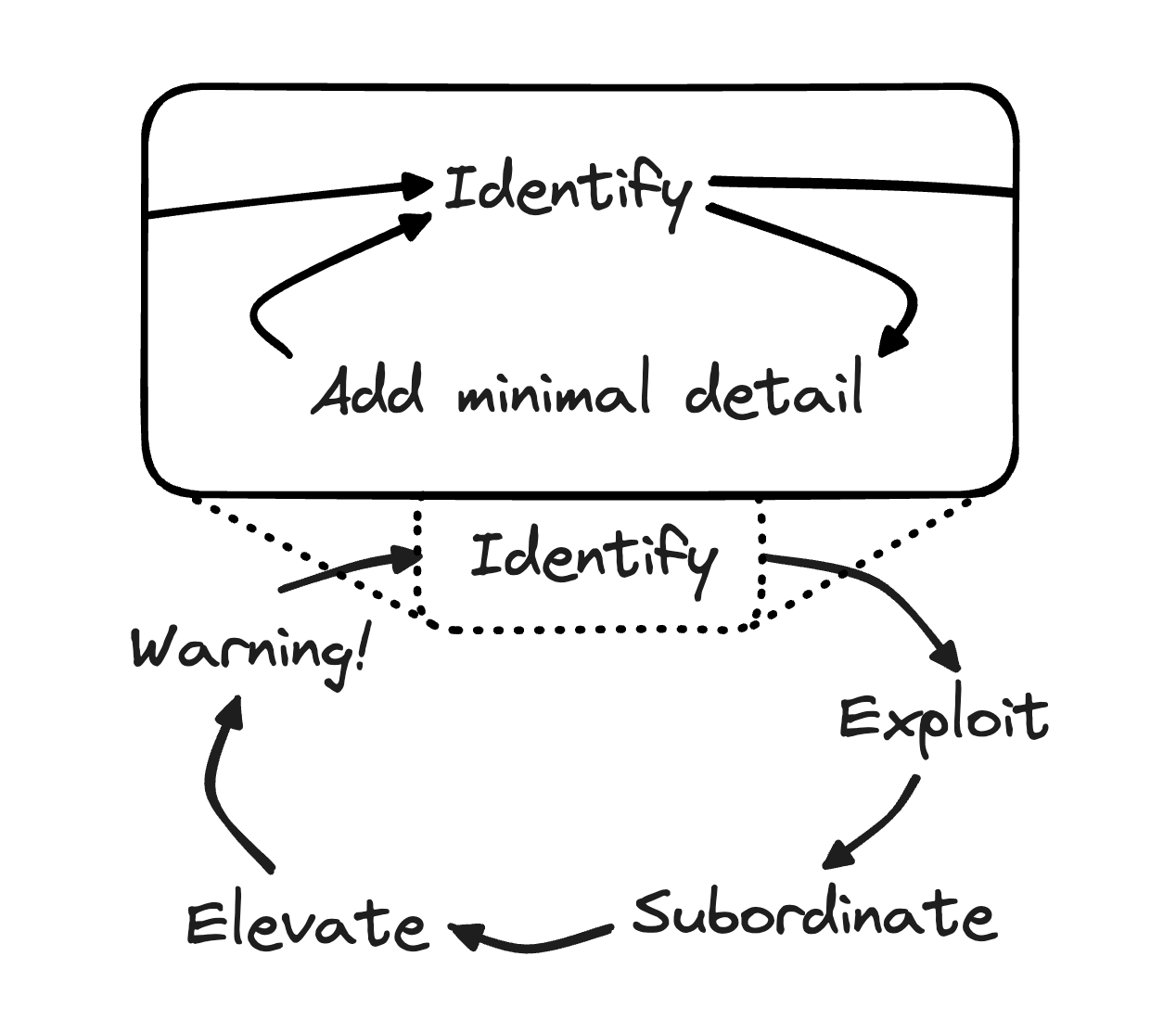
- For the currently marked Constraint, add minimal detail.
- Identify the new, more detailed Constraint.
Repeat these two steps until you feel that the Constraint is detailed enough to take specific action on.
Once you, with your system, reach the point where Constraint is detailed enough to be actionable, you are ready to proceed to Decide How to Exploit the System's Constraint lesson.
Let's illustrate some of the different things that can happen during this step using our Tea Shop example.
Tea Shop example
One note before we start with the example
While the steps are intended to be straightforward, please do not think that you will be able to proceed through the steps as fast as you read about them in this example. Each step took some time to think through, consider some alternatives, and view the system through different lenses and models. Reading the outcome of this process will likely be much faster than how long it takes to actually execute this process.
We start the example with our current Constraint.

Perform Identify Step 1 - For the currently marked Constraint, add minimal detail.
We could begin to focus on the fact that it is not all of the Public that drinks tea. A way to add minimal detail is to turn one thing into two things. So, we can express that there is a Public, and some of those people become Tea Drinkers.
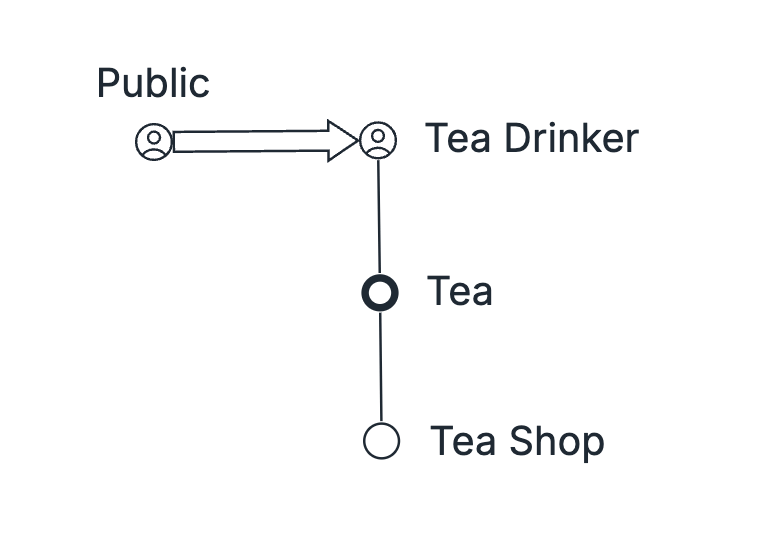
Perform Identify Step 2 - Identify the new, more detailed Constraint.
With the distinction between Public and Tea Drinker on our Value Chain, our new Constraint could be not enough of the Public becomes Tea Drinker. Notice that since there is only one Constraint, it is no longer on Public but in a new place on the Value Chain.
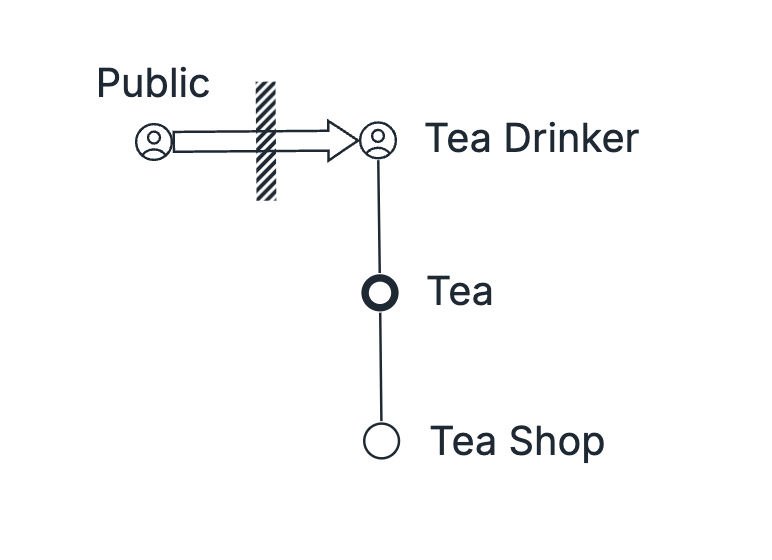
We now ask, is this Constraint detailed enough to be actionable?
Let's say that for our example, it is not quite clear what action to take. So, we repeat the steps.
Perform Identify Step 1 - For the currently marked Constraint, add minimal detail.
We notice that there is a distinction between a Tea Drinker and a Tea Drinker aware of our Tea Shop. Let's add that detail.
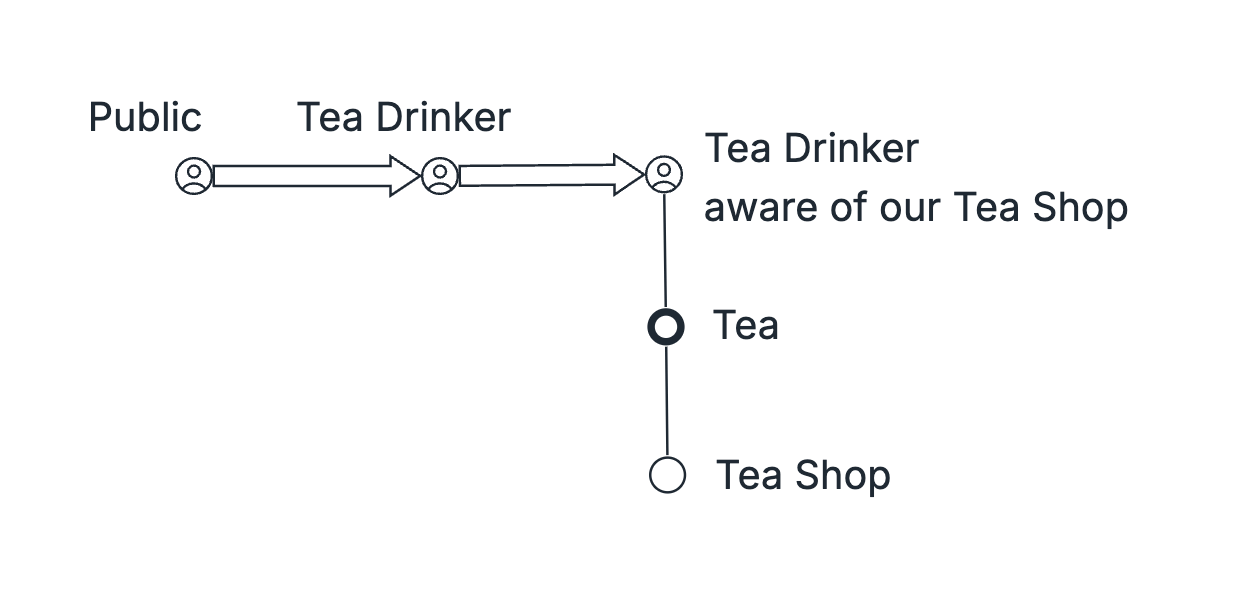
Perform Identify Step 2 - Identify the new, more detailed Constraint.
With the distinction between Tea Drinker and Tea Drinker aware of our Tea Shop we decide that our Constraint is actually not with how many people become Tea Drinkers in general, but with how many of Tea Drinkers become aware of our Tea Shop.
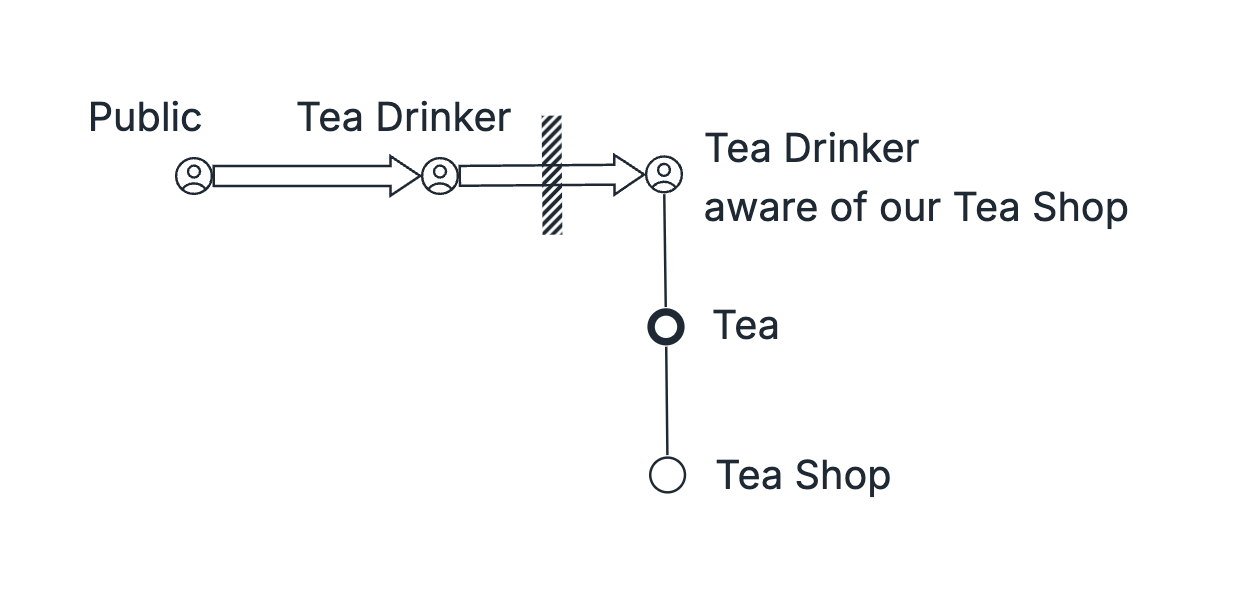
We ask again, is this Constraint detailed enough to be actionable?
Let's say not yet. We repeat the steps.
Perform Identify Step 1 - For the currently marked Constraint, add minimal detail.
We notice that being aware of our Tea Shop is not sufficient. We begin to consider the simplest customer journey consisting only of two steps for now: Tea Drinker aware of our Tea Shop, and Tea Drinker in our Tea Shop.
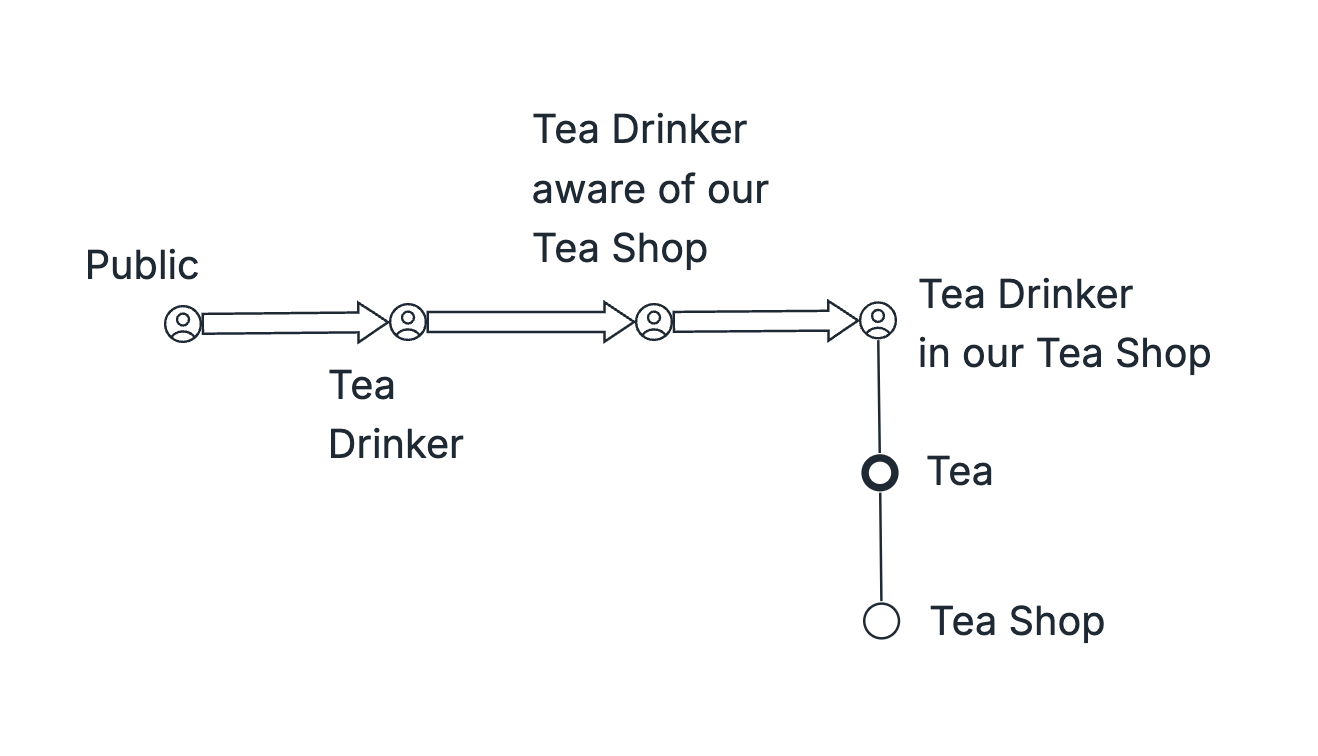
Perform Identify Step 2 - Identify the new, more detailed Constraint.
We continue expanding hypotheticals in our example. In one scenario, it could be the case that our Constraint remains making Tea Drinkers aware of our Tea Shop (turning them into Tea Drinker aware of our Tea Shop).

Alternatively, in another scenario, it could be the case that we notice we have plenty Tea Drinkers aware of our Tea Shop, but not enough of them end up coming into the Tea Shop (becoming Tea Drinker in our Tea Shop).
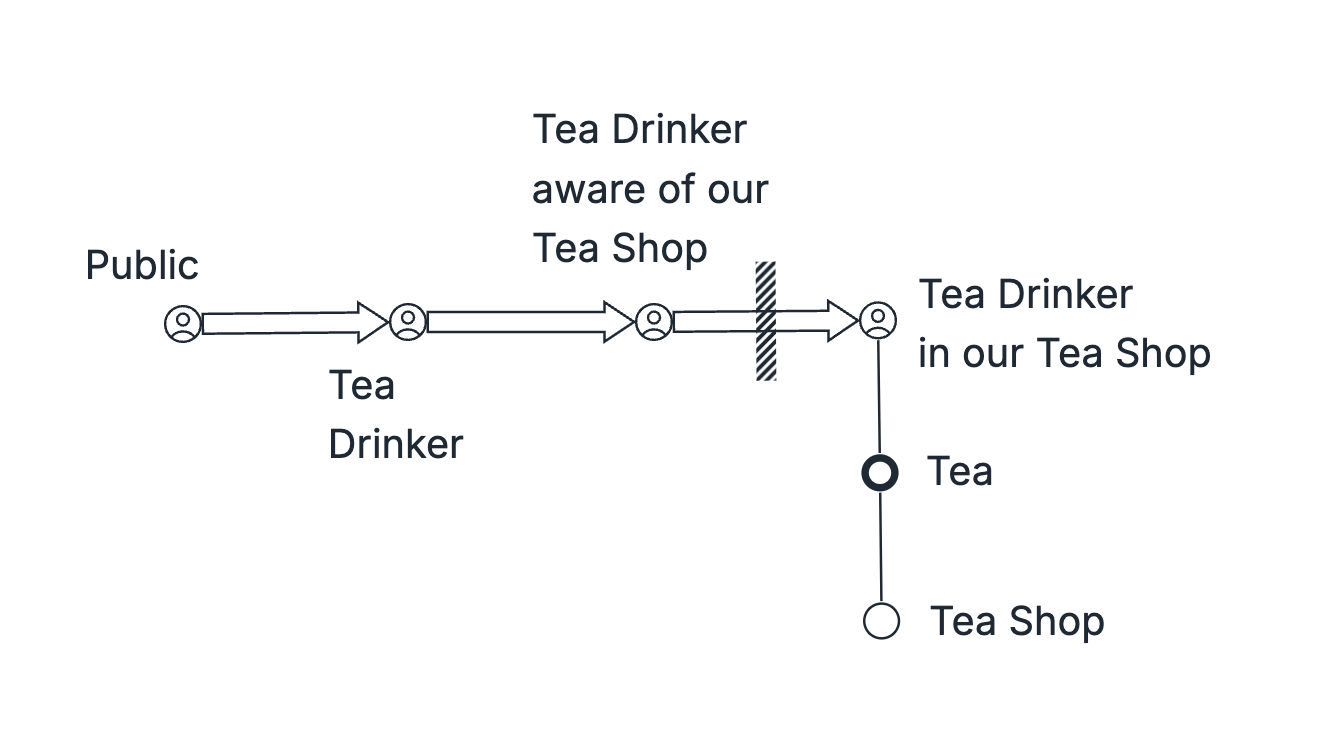
We ask again, is this Constraint detailed enough to be actionable?
For the purpose of this excercise, let's decide that we have enough ideas about how to deal with the Constraint where not enough Tea Drinkers aware of our Tea Shop become Tea Drinkers in our Tea Shop. As such, we completed Identify the System Constraint Step and will proceed to Decide How to Exploit the System Constraint next.
Once you, with your system, reach the point where Constraint is detailed enough to be actionable, you too are ready to proceed to Decide How to Exploit the System Constraint step.
Again, the steps are:
- For the currently marked Constraint, add minimal detail.
- Identify the new, more detailed Constraint.
Repeat these two steps until you feel that the Constraint is detailed enough to take specific action on.
Summary and reflection
Notice how the two-step procedure of adding detail at the Constraint allows you to clearly decide what becomes part of the Value Chain and what stays out. You do not have to model the entire Value Chain in detail in order to identify the Constraint. If you are worried that we are leaving out important details elsewhere, go back and review Improving a non-Constraint section in the Constraint lesson.
As the level of detail of the Value Chain increases, you are adding detail for your specific system and context. Follow on steps will generate actions specifically for your system. If you were analyzing a different system, the generated actions in follow on steps would be specific for that other system's context. The benefit of focusing on the Constraint is that you do not have to consider all possible actions, only the ones that are relevant to your system in its current context.
Lastly, because you are focusing on the Constraint, future actions you take will affect the one place in your Value Chain with the most leverage to impact your entire Value Chain. Your improvements at the Constraint will immediately improve the whole.
Up next
Now that you completed this step, you should proceed to Decide How to Exploit the System's Constraint lesson next.
If you are curious what Identifying the Constraint is like for User Need or Component, visit the User Need Constraint or Component Constraint lessons.
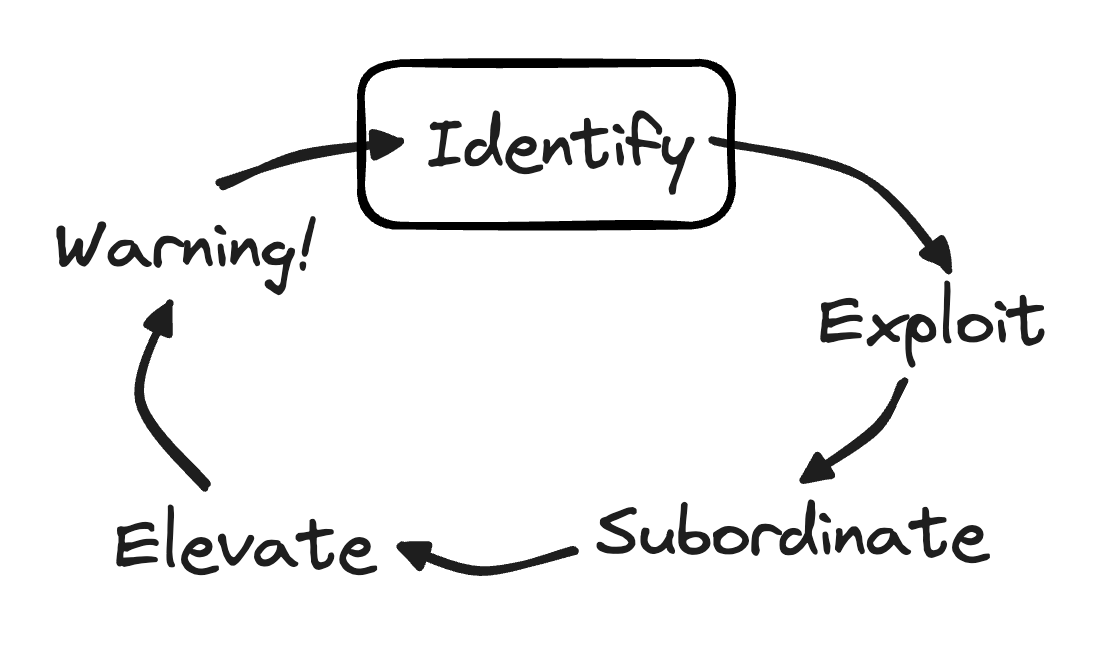
Go back
Identify the System Constraint
Learn how to identify and add detail to the system Constraint in your Value Chain. Follow a step-by-step process to pinpoint a clear and actionable Constraint, using the Tea Shop example as a reference.
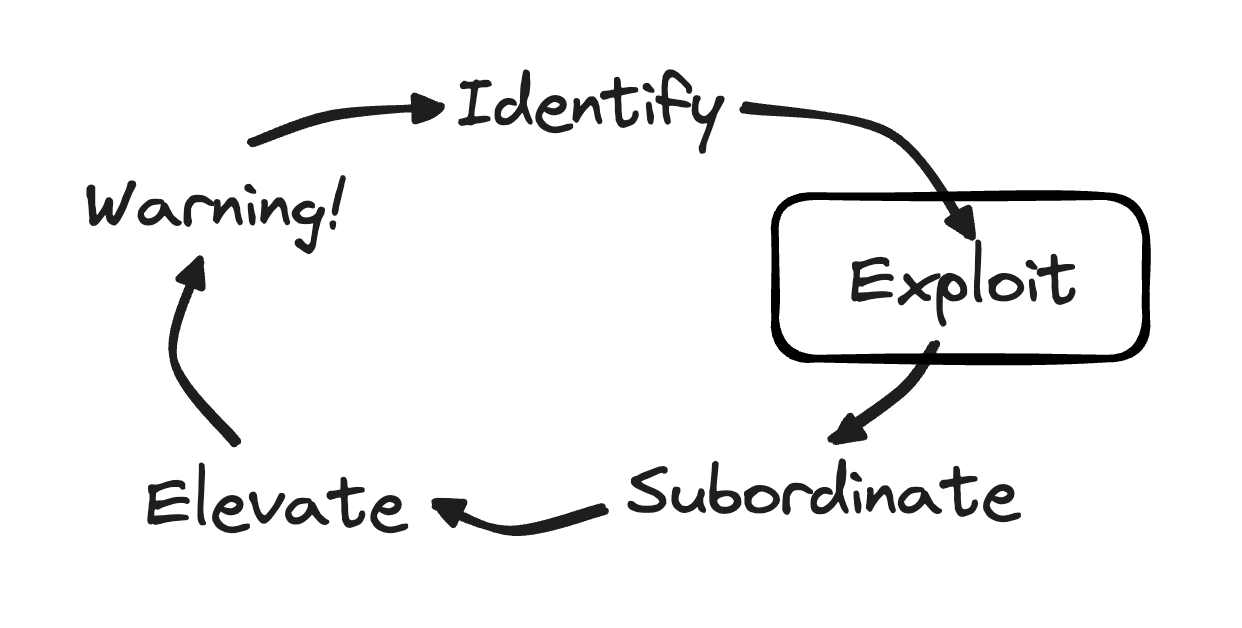
Up next
Decide How to Exploit the System's Constraint
Learn how to maximize the efficiency of your system's constraints and ensure no resources are wasted. Discover practical strategies to exploit your constraints and increase the overall value delivered by your system.
